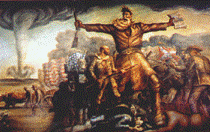History, Department of
Date of this Version
April 2008
Abstract
Food historian Harvey Levenstein has argued that in the early 20th century “the sorry state of American gastronomy was best typified by Duncan Hines,” then the first restaurant critic of national stature. While Hines’ bestselling guidebook of the 1930s–1950s, Adventures in Good Eating, was not adventurous by contemporary culinary standards, it nevertheless encouraged a self-identified community to articulate its tastes, as subsequent listings were compiled and revised mostly by Hines’ readers. This “freemasonry of motorists” constructed a gastronomic geography of America in an era when cars, roads, and the spatial reorganization of work and leisure developed roadside dining into a foodway of tremendous cultural and economic power.
Yet, if a community authored these guidebooks, were Americans ever without direction in uncharted spaces or were they actively creating places? I argue that the figure of and activity surrounding Hines stem from the material and social shifts caused by the conjuncture of automobility and consumerism. Although three decades later these same historical trends aided the dissolution of Hines’ community, knowledge produced by this nexus of popular culture contributed to modern practices and discourses of culinary regionalism, fast food, and gourmet “tastemaking.” The relationship between this critic, his community, and the larger context of consumption are thus integral to understanding, rather than dismissing, the spatial and aesthetic history of American taste.


Comments
Paper presented at the 3rd Annual James A. Rawley Conference in the Humanities — Imagining Communities: People, Places, Meanings. Lincoln, Nebraska, April 12, 2008. Sponsored by the University of Nebraska–Lincoln History Graduate Students’ Association. Copyright © 2008 Damon Talbott.